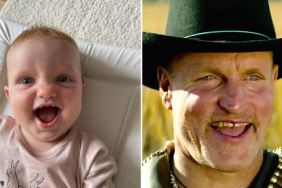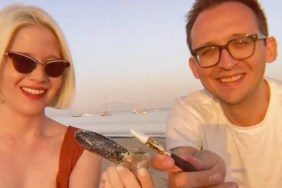
CraveOnline: Tell me about the split-screen ballet sequence.
Brian De Palma: Well, I’ve always liked that ballet. It’s something I saw on the Internet. It’s a video of a Jerome Robbins choreography of Afternoon of the Faun. I loved the Debussy music and I loved this way he’s choreographed it with these two dancers in a rehearsal room and I’ve always tried to figure out where I could put it in a movie. In the original movie, Isabelle goes to a movie and slips out the side door so I said, “Well, why doesn’t she go to the ballet, and I’ll keep her there, with the tight close-up so everybody thinks she’s watching the ballet, get them enraptured in the ballet? Meanwhile, the preparation to the murder is going on, on the right side of the screen.” That’s how it kind of worked out.
The decision to have the ballerina sort of staring at the camera…
Well, in the ballet, they’re staring at the mirror.
Oh, interesting.
Yeah, when they stare straight into the camera, in the ballet, that’s the mirror. They’re in a room with a big mirror and as they’re going through their various motions, they look and see what they look like, which is what ballet dancers do all the time.
Was this shot on 35 millimeter?
Yup.
I had to watch it on a computer. It was a little difficult to tell on my screen. Do you want to work in digital at all?
Oh, I think it’s inevitable. We’re all going to be shooting digitally, eventually. You know, this film is shot on film and now it’s released digitally. I mean, there used to be 4K digital and now, they don’t do 4K. You can’t get it done in Europe. Suddenly, 4K is cut out. Now there’s 2K and it looks extremely good and all the theaters are all digital, now. So, pretty soon, all the labs will be gone and everybody will be shooting digital.
Do you think we’re losing something with that?
No, because I think the technology, the digital technology, is getting so much better with each generation of cameras, that the definition and what you can do in post production is just…. It’s going to be better than film.
I noticed, for example, there’s at least one split diopter shot in Passion and I’m wondering….
Two split diopter shots.
When you’re in digital, is that something we can just do in post? Is that something that’s even gonna be there on the day? I know you’re a fan of that technique.
That’s a good question. I don’t exactly know. I mean, it’s something that I’ve always done on the day but obviously, you can manipulate images to put two, in-focus images and meld them together. Sure.
Getting back to the split screen, you’ve used split screen a lot and there’s a lot of film makers who don’t. It’s not a tool they keep in their tool box very often. I’ve always liked your way of using it because you’re not afraid to call attention to the “movie-ness” of the movie.
Well, I’ve been doing that my whole career. I’m always making you be aware that this is a movie. In this split screen, it’s a trick because it’s making you think Isabelle is at the ballet, while in fact, she’s at the house and I’m using that tight close-up to make you think she’s at the ballet and when I pull back, I show that she’s, in reality, underneath the scaffolding at the house. So, you have to find a really good reason to use it and it’s always surprising when you juxtapose two images and I had no idea how it was ultimately going to work. I kind of liked the initial idea and then I shot it and then we put it together and it kind of worked, really well. I liked the idea that you get so entranced with the ballet, you sort of forget that the murder is happening over there, on the other side of the screen, and they’re both kind of love stories, on each side of the screen.






